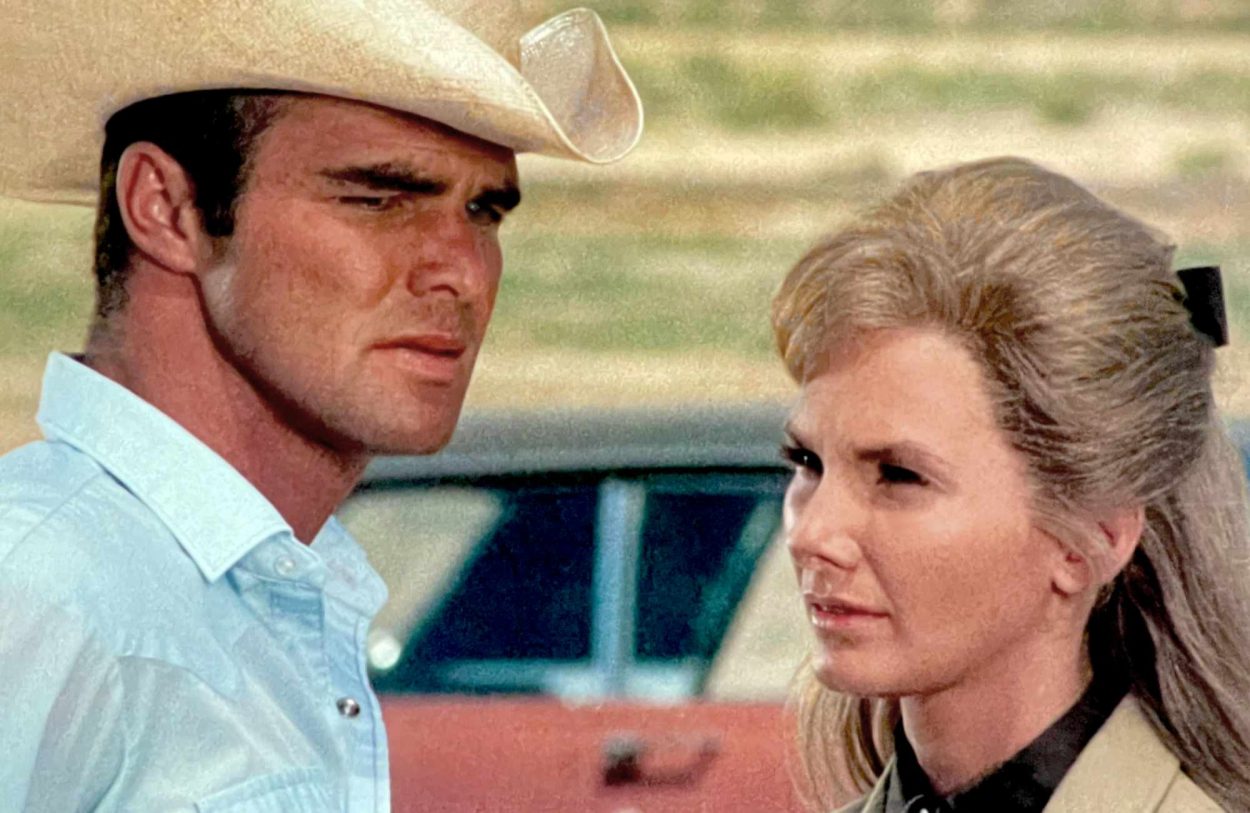“Style is all about instinct. It’s all about how a director sees things.” – John Carpenter
Hollywood has an illustrious history of filmmakers who were on the fringes of the studio system but, by hook or by crook, managed to chisel their way into the big time using a low budget film as their calling card. The number of directors, both past and present, that have managed to earn longevity in cinema, delivering a body of work that can be recognized with a style unto themselves, is relatively small. The ability for a filmmaker to consistently marry both style and substance is like breaking the cinematic sound barrier, and John Carpenter wrote, directed, scored and edited Assault on Precinct 13 like a bat out of hell. If you’re a young filmmaker looking to get into the game, Carpenter has provided you with a play book that other filmmakers have successfully emulated to get past the Hollywood gate keepers.
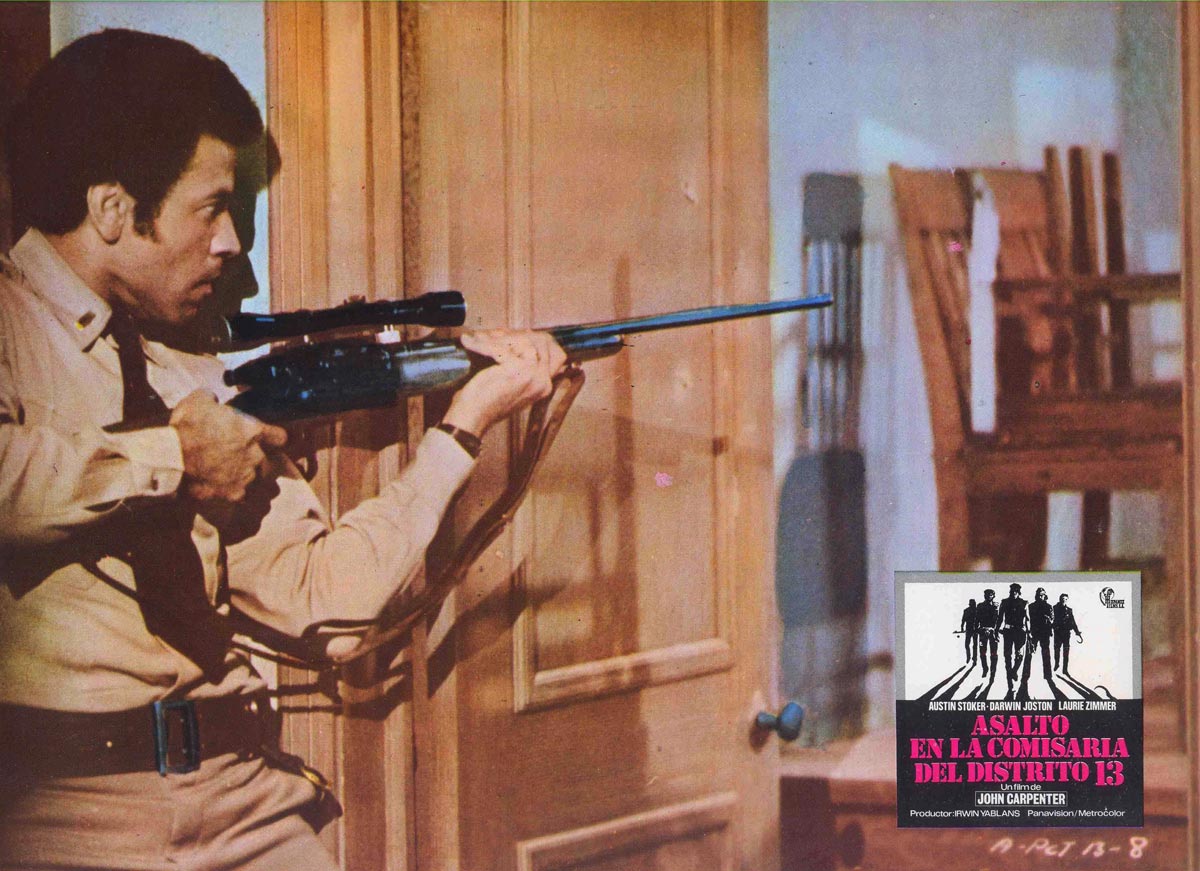
Before he was christened the “Master of Horror,” John Carpenter was coming off directing his 16mm USC graduate film (the sci-fi comedy Dark Star 1974) that he co-wrote with Dan O’Bannon (Alien 1979), and sweetened for a theatrical release by distributor Jack H. Harris (The Blob). This student film on steroids put Carpenter on the map, and after being approached by an investor who wanted to make a low-budget exploitation film for under 100K, he wrote Assault on Precinct 13 (initially titled: The Anderson Alamo) in eight days. Assault creatively masks its financial limitations and is the first film to display John Carpenter’s secret weapon as a filmmaker – his mastery of executing the simple plot conceit with archetypal characters.
The influence of Howard Hawks on Carpenter is on full display in Assault (Hawks also directed the original The Thing), with the foundation of the plot influenced greatly by the boxed in and enclosed setting from Rio Bravo – John Wayne has a bad guy in jail and the bad guy’s buddies are coming for him, so it’s up to the Duke, Dean Martin, Ricky Nelson and Walter Brennan to hold them off. The simplicity and pay-off of this plot was so effective, Hawks remade different versions of his own movie – El Dorado (1967) and Rio Lobo (1970). Carpenter was wise to draw from this well and threw in some determined gang banger, zombie-like killers – in the mold of George A. Romero’s Night of the Living Dead (1968). Assault is the kind of plot that fits perfectly in the old TV Guide movie descriptions: “A murderous street gang launches an all-out assault on a decommissioned police station that’s harboring a man who killed one of their leaders.” Or inside a fortune cookie: “Ghetto-Bravo”.
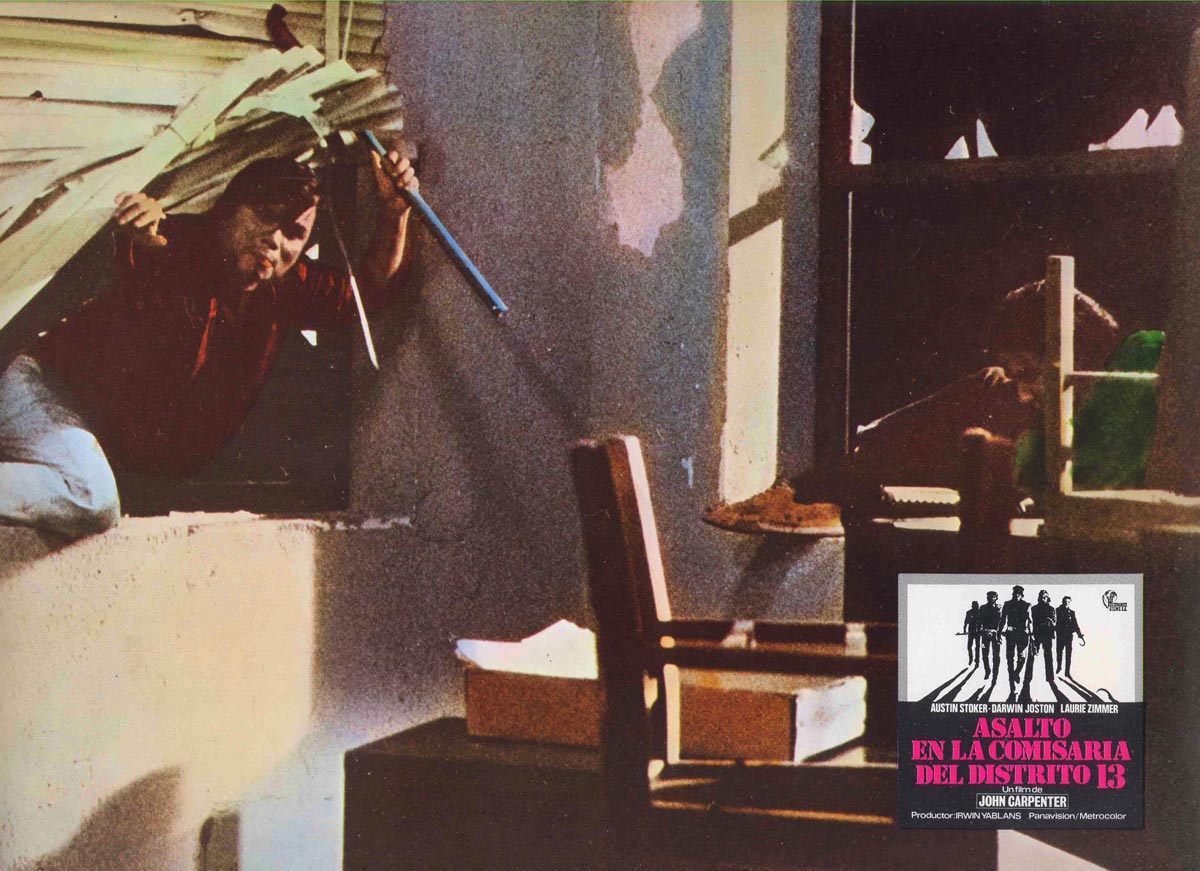
Assault would be Carpenter’s first rodeo filming in 35mm Panavision, teaming up again with Dark Star director of photography Douglas Knapp, and together the two would shoot a taught thriller, turning South Central Los Angeles into an urban, semi-ghost town of a city. This is a film aspiring directors need to go to school on if you want to see how to shoot lean, but you still have to inject your own style into the boxed in, or (mostly) enclosed location formula that features prominently in your story, then pull it off like a high line pro.
How can this plot-line, or variations of it, still work after all these years? Well, maybe your dialogue ignites like a ground bloom flower on the 4th of July like Reservoir Dogs (1992), while thieves hide out in a warehouse trying to figure out what went wrong. The Raid (2011) tapped into this structure when they took a key plot point from Bruce Lee’s Game of Death (1972) to a whole another level, as their hero moved up the enclosed apartment building while facing a blitz of unending attackers. Attack the Block (2011) switched up the Assault formula, putting the gang members under siege, and making the antagonists aliens. We can’t forget about The Purge franchise, or the claustrophobic thriller Green Room (2015), which used lip-biting tension and inventive visuals to make the “boxed in” trope feel fresh. Let’s take a look at how John Carpenter made such an enduring, influential movie, with the limited budget he was afforded.
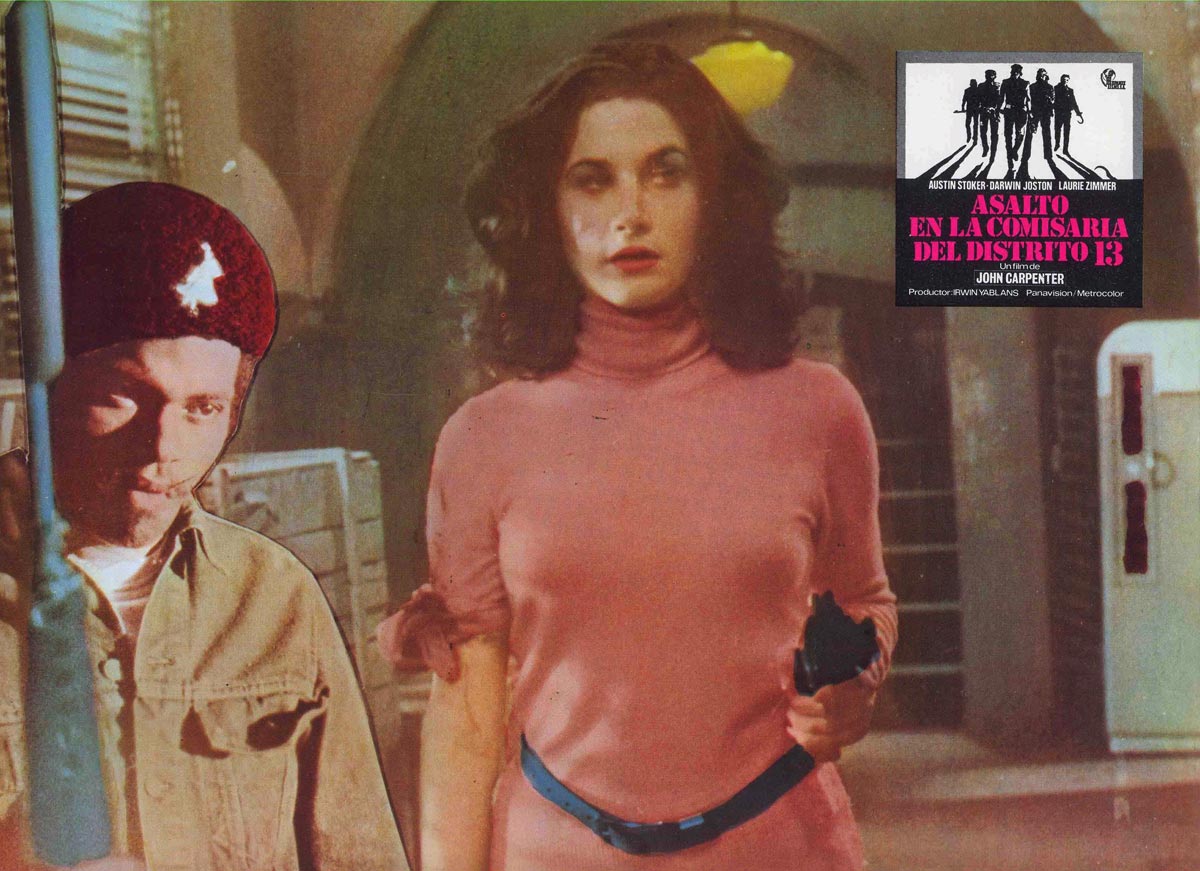
He Gets Down to Business
When the opening blood-red credits hit the screen over a black background, and the hybrid hip-hop/disco synth score begins to pinball around your brain, Carpenter’s telling us that shit’s about to go down. You know this, you feel it and he wastes no time getting to it, killing off six gang members caught in a turkey shoot from above by LAPD cops. After learning of their fallen brothers, Carpenter’s hyper realized version of a multi-cultural L.A. street gang makes a blood oath in an almost satanic looking ritual called a “Cholo” (to the death), complete with self-inflicted knife wounds used for blood-letting. It’s the only scene the gang members speak, giving purpose to the mindless killers. This moves the plot forward, while simultaneously making the scenes with the gang members easier to film (since they never speak), shooting them often on a long lens from the vantage point of the people trapped inside the police precinct. Carpenter keeps them as faceless, shadowy attackers, while the score plays on top of some ambient street noise. It’s a graphic novel come to life, and these silent bastards are everywhere.
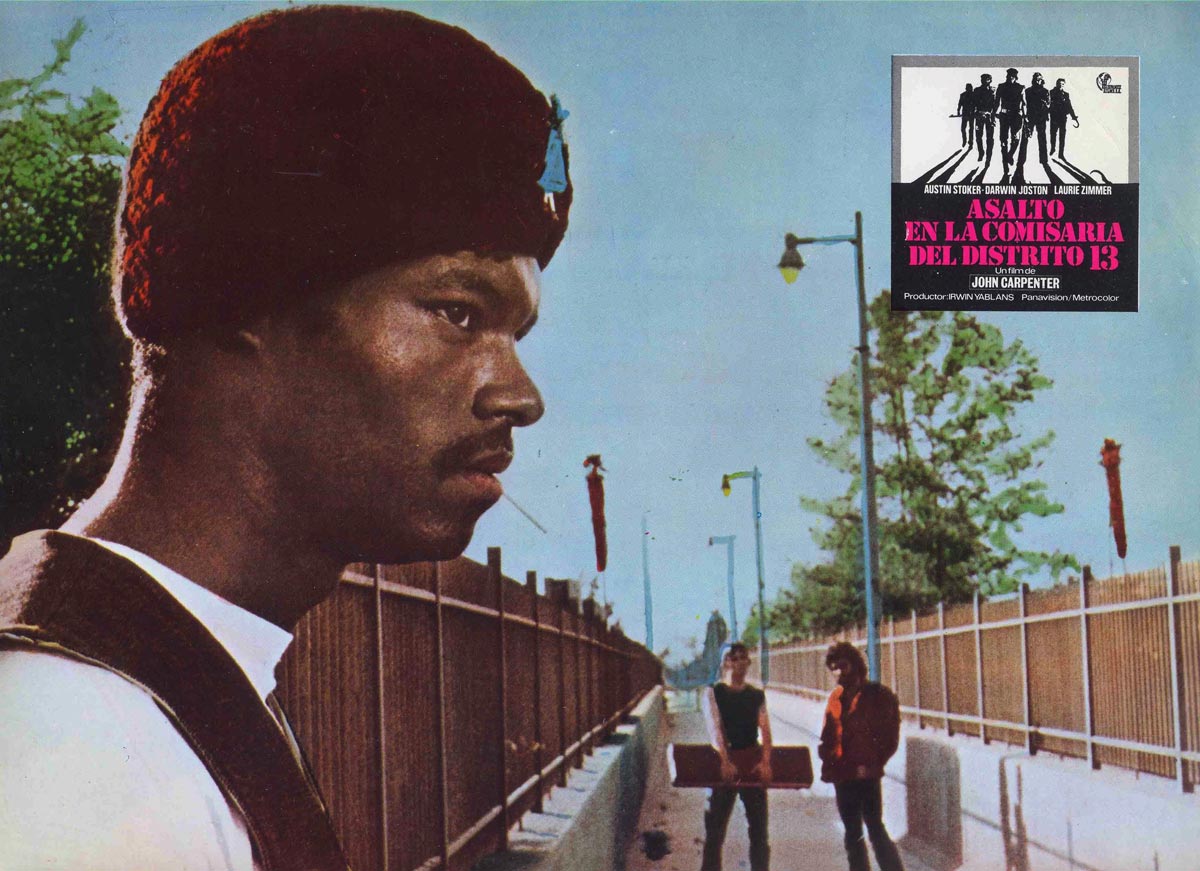
It’s a Cast of Mostly Unknowns
In what’s really an ensemble film, Austin Stoker gets top billing as Lt. Ethan Bishop, and he’s a cool customer when the formality of closing down the precinct turns into a nightmare scenario, but his credits were of the B-movie variety with his stand out role being MacDonald in Battle for the Planet of the Apes (1973). Carpenter needed to keep as much money on the screen as possible, so casting relative unknowns was a financial necessity. Sadly, with the exception of Tony Burton’s recurring role as Apollo’s trainer in the Rocky franchise, none of the actors in Assault experienced any break-out success after the film’s release. Darwin Joston “You gotta smoke?” who plays Napoleon Wilson, had roles in Eraserhead (1977) and played Dr. Phibes in The Fog (1980), but struggled in the 80’s – playing small roles and not enough of them. Napoleon, a death row inmate on the prisoner transfer bus that has to make an emergency stop at the precinct, brought a convict cool to the part along with a tough guy code of honor, which played well with fellow transfer convict Wells (Tony Burton) and Lt. Bishop – who is forced to trust him. Nancy Loomis is an effective nag as Julie, and Laurie Zimmer has an understated resolve as secretary Leigh, who shares a “what might’ve” been chemistry with Napoleon.
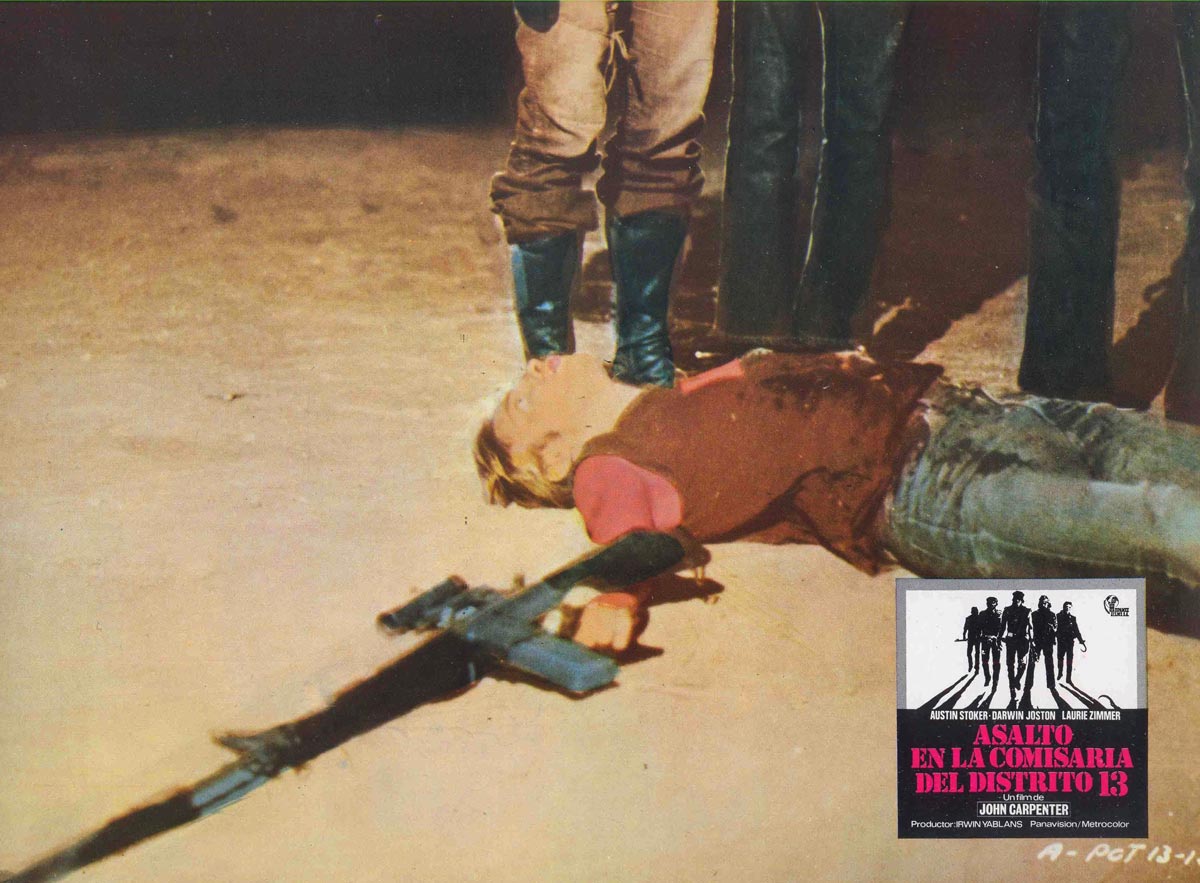
Shocking Violence that Supports the Story
Child actor Kim Richards might’ve been able to Escape to Witch-Mountain but she sure as hell couldn’t escape south central Los Angeles and the Street Thunder Gang. It’s a scene that’s long been regarded by several critics as gratuitous, with Carpenter himself saying he was “young and stupid” to have shot and included the scene that tipped the scales to an X-rating (Carpenter pulled a bait and switch by excising it from the final cut provided to the MPAA but left the scene in the film prints provided to distributors).
From a story stand point, by killing the cute little girl with the blonde pig tails that got the wrong flavor of ice cream, Carpenter achieves two things by leaving the scene in: First, he solidifies his antagonists as sub-human, rather than just some tough guys who are pissed their fellow baddies got killed by cops. The second thing the controversial scene does is provide a brutal inciting event, motivating the father of the dead girl to follow the gang members in his car, resulting in a retaliation murder that leaves him traumatized and unable to speak to the officers inside the precinct. This gives the gang members a perfect scenario for revenge, they get to kill cops, and the man who killed one of the gang’s leaders – all in the same location.
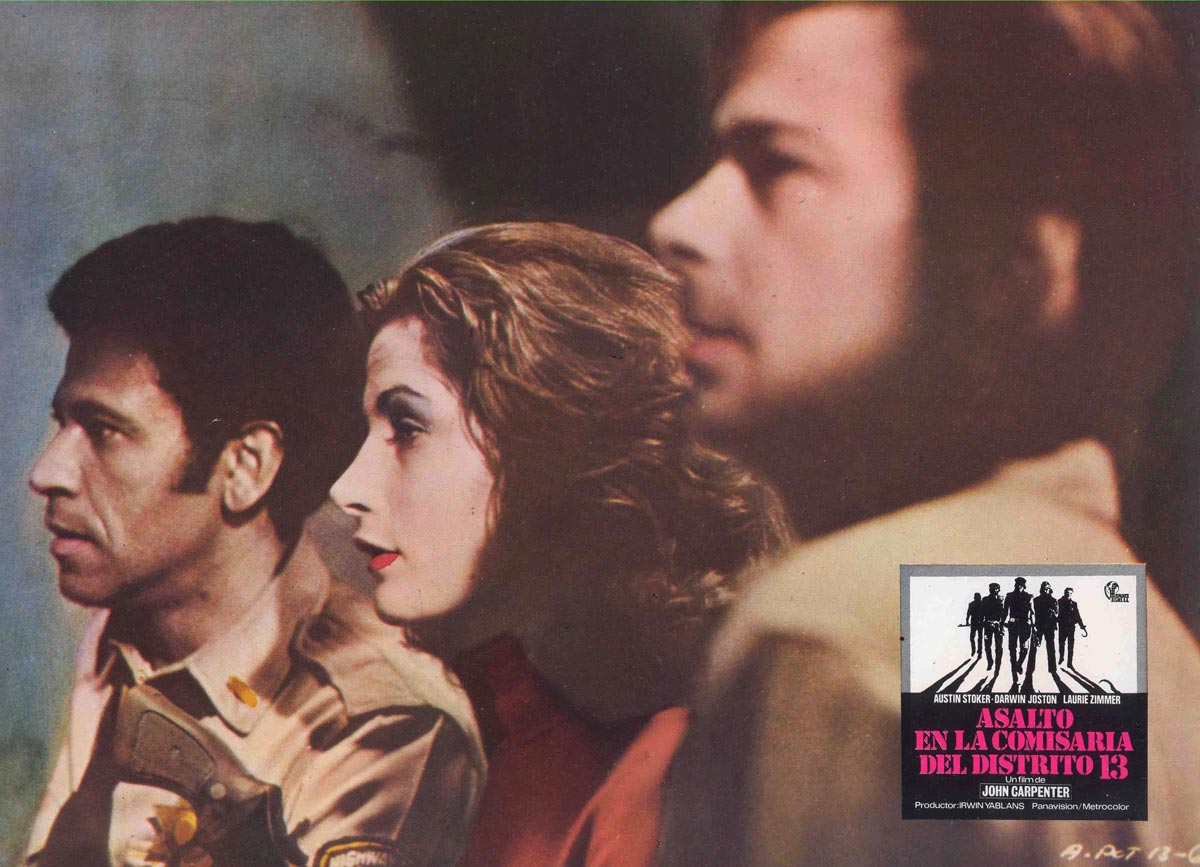
Maximizing the Drama
Carpenter deftly crafts a scenario that brings three prisoners to the Anderson Precinct holding cell (including death row bound inmate Napoleon), when the transfer bus that’s headed to Sonora, led by Special Officer Starker (Charles Cyphers) has to make an emergency stop to accommodate a prisoner who appears deathly ill. It’s inventive writing that moves the action quickly, and accomplishes yet another important plot point – creating tension within the police station when the siege begins. It’s all going down, and Bishop will have to trust the surviving prisoners (Napoleon and Wells), if he wants to increase everyone’s chances of survival “Give me a gun!”
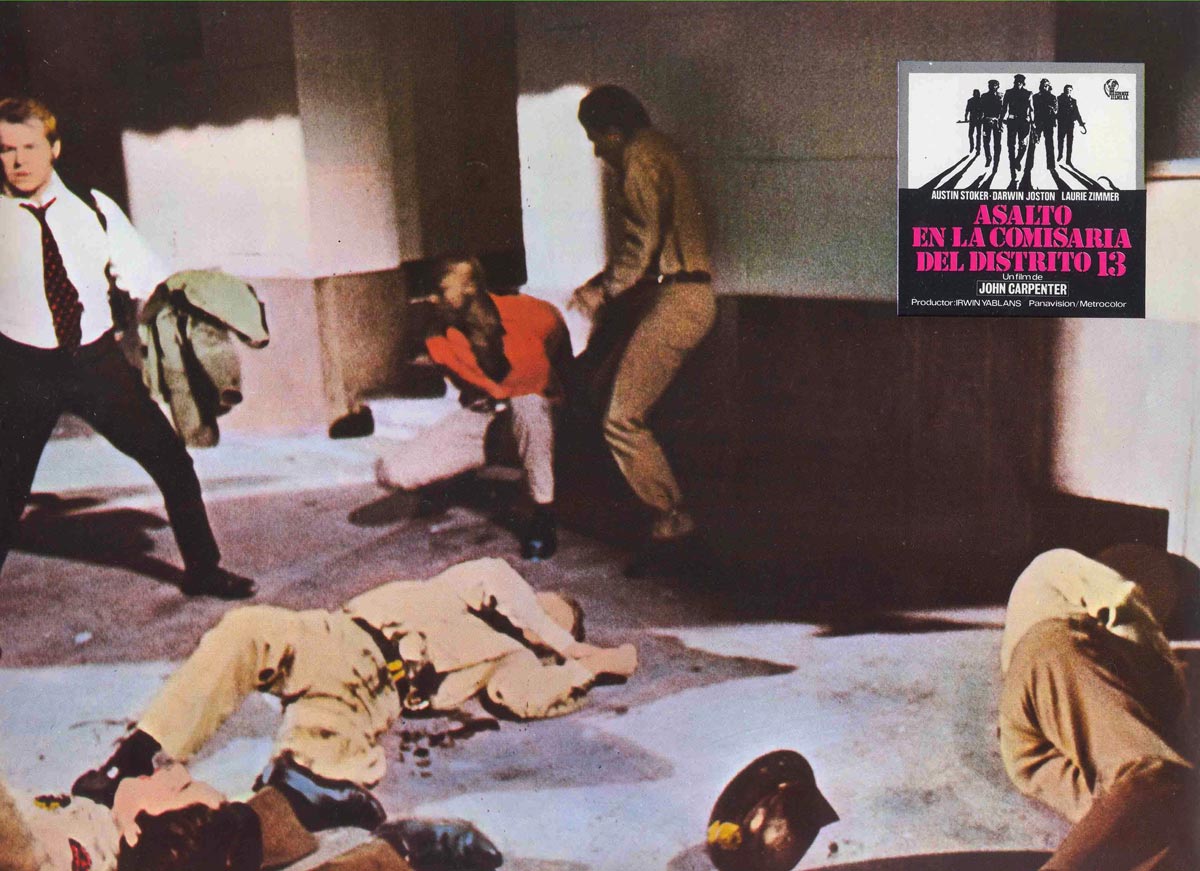
Economy of Filmmaking
When the Street Thunder gang begins their attack, the onslaught of bullets that pelt the precinct are muted by silencers, and enhanced by the sound of ricocheting bullets – thanks in no small part to sound designer and future director Mike Wallace – who tricks us into believing there is actually more carnage happening to the station than what the budget could afford. Carpenter employs small bursts of broken glass to signal that the assault is under way, and cleverly masks the gang members that are blown backwards trying to breach the station, with Louver blinds. It’s a prime example of solving financial limitations (expensive use of time consuming squib set-ups) with creativity. Carpenter’s editing, under the pseudonym John T. Chance (a nod to John Wayne’s character in Rio Bravo), supported by his influential score, tightly ties everything together.
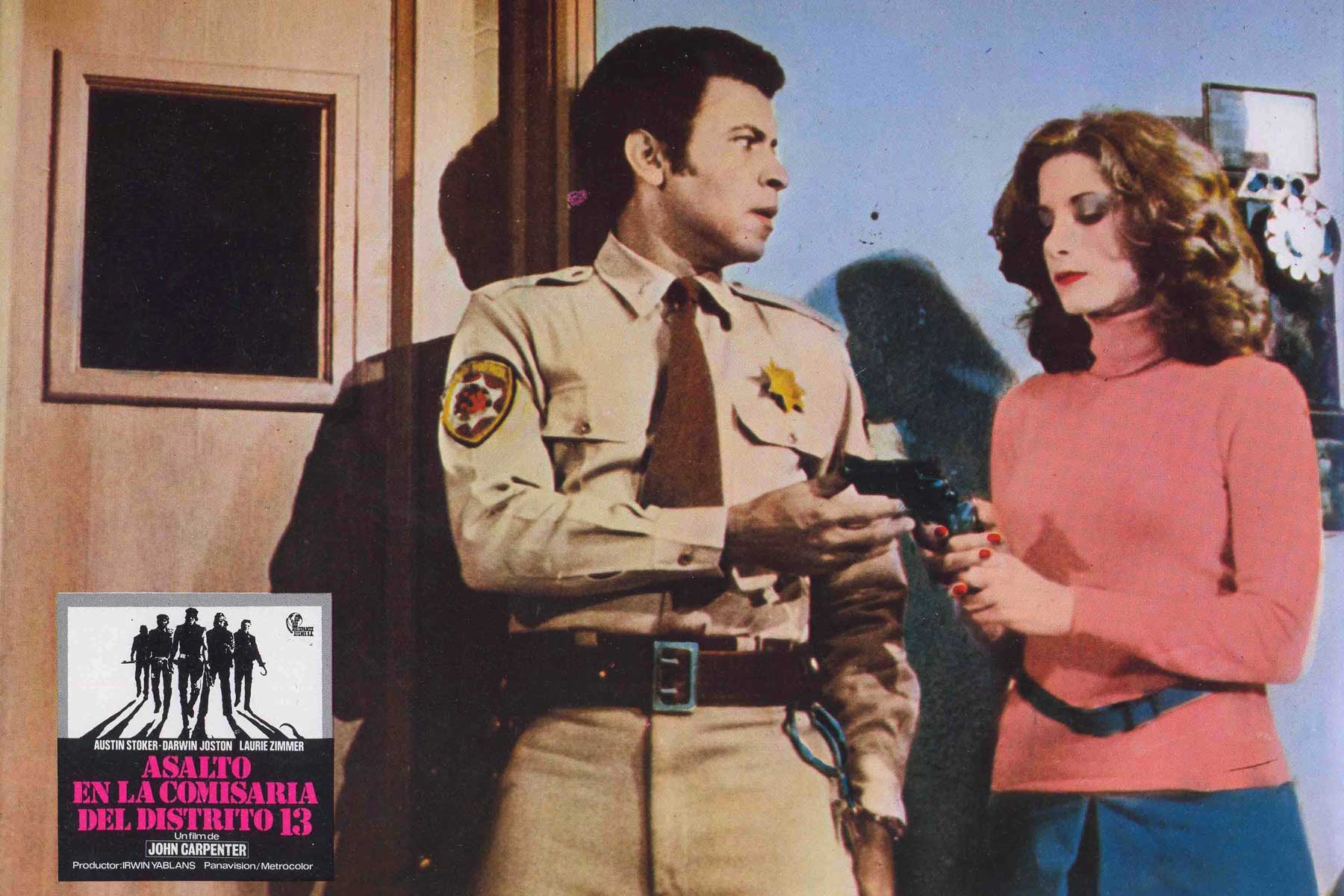
It’s a Genre Bender That Holds Up
Writing and casting a black actor in Stoker as the lead, sets the film up as another run of the mill, drive-in exploitation film of the era, and yet the film quickly becomes an urban western, inhabited by zombie like villains. It’s an original take on a plot that’s been well traveled.
The film has been so influential and entertaining, that Hollywood went ahead and remade it, this time with actors who were a little more well-known (Laurence Fishburne and Ethan Hawke). There are more rumored Hollywood remakes of Carpenter films to come but Assault stands as the first feature that showcased his multitude of talents. He would later reflect on Assault, “It was a really grueling, grueling shoot. My longest day on the shoot was 24 hours in and out. It was an eye opener in terms of what you have to do to prepare a film.”
John Carpenter reminds us that it’s one thing to “break-into” Hollywood with a great film, but the legends engrave their initials when they get there.

